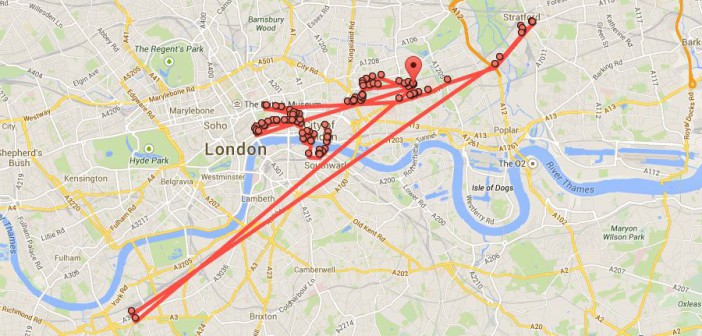The world around is mobile obsessed and sharing ‘where we are’ is becoming increasingly important.
We use our mobile location to search for directions, check in to restaurants, tag places we’ve visited, we even use it to match with nearby singletons.
With our whereabouts becoming more and more critical to the way we live our lives some brands are yet to wake up to the power location has to drive marketing success.
The scale of this new breed of mobile-dependent, highly demanding consumers are the driving force behind sales like those of Asos.com who recently reported 50% of their February sales were made on mobile.
Further showing the scale of mobile shoppers is xAd’s latest report which highlighted ‘on the go’ researchers are 45% more likely to make a purchase within the hour than those researching at home. But what does this mean for marketers? In short, mobile brings opportunities to engage and activate customers in innovative ways.
Location-based marketing in particular is one of the most powerful means for identifying and delivering on consumers’ real-time intent. By leveraging intent to create purchase incentives and foster a more personal engagement, location is critical to tapping into these precise moments of decision making.
The truth is, marketers would be foolish not to take advantage of mobile marketing, in particular location based marketing, with its ability to connect brands with desired audiences with greater relevancy and precision. That’s why it was great to see the latest figures from the IAB and PwC, revealing that mobile now accounts for 78 per cent of digital ad growth.
Marketers relying only on search and social are doing a disservice to both the brand and their consumers, by neglecting the huge opportunity to tap into offline behaviours. With consumers spending an increasing amount of time reading, searching and viewing content on their mobile device the number of opportunities to reach the ‘on the go’ consumers 1:1 are endless.
However despite the rapid growth and adoption of smartphones, the majority of retail transactions (over 90% according to xAd’s latest report), still occur in the ‘real world’ at bricks-and-mortar stores.
As a result, the goal for marketers isn’t to replace the offline experience with an online one but to enable a faster, more seamless purchase process. In addition to providing quality ‘on the go’ service to customers, the right mobile strategy can enhance their customer experience by nurturing brand-customer connections in-store.
What’s imperative now is that the excitement we’re seeing around mobile’s potential to connect brands with highly demanding, ‘on the go’ consumers, is converted into delivering smart, creative content that make the most of mobile’s unique format.
That creative content could be vertical video or more relevant, dynamic display ads. If executed correctly, there is plenty of potential for successfully targeted campaigns that put the consumer first – a win, win, win for consumers, brands and marketers.
As mobile devices become increasingly part of our everyday lives, location-based marketing will become the main targeting tool for marketers looking to personalise engagements with individuals based around ‘who’ their desired consumers are AND ‘where’ they are.




